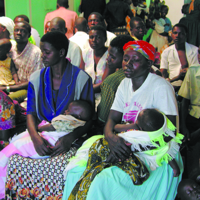Editor's note: This is the second of a five-part series examining security and development aid and capacity-building in East Africa. Part I provided an overview of the challenges facing East Africa. Part II examines the overlap between public health and security challenges. Part III will examine the overlap between small arms trafficking and WMD nonproliferation. Part IV will examine the overlap between counterterrorism and efforts to contain criminal violence. Part V will provide success stories for the security-development model and discuss next steps.
As the burden of disease declines in much of the world, urbanization and changing lifestyles in Africa, coupled with inadequate public health infrastructure, threaten to deepen a longstanding public health crisis. Increased and novel sources of funding are badly needed to bolster infrastructure and secure tentative gains made over the past decade.
East Africa is host to a number of epidemic-prone diseases, including cholera, typhoid fever, meningococcal meningitis, plague, dysentery, neonatal tetanus, measles, yellow fever and the Ebola and Marburg viruses. More frequent human interactions resulting from rising rates of urbanization make the spread of communicable diseases more likely.

